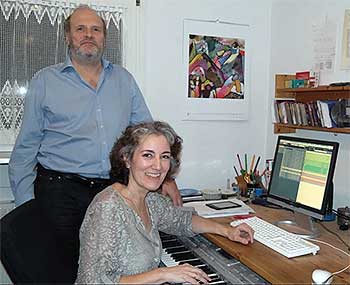
Where Science Meets Sonic Magic
In the world of music, a universe of emotions lies hidden. What at first glance appears to be a fleeting play of vibrations, on closer inspection reveals itself to be a profound language of the soul. The Tendency Theory invites us to decipher this language and experience the emotional power of music in a new way.
On the Trail of the Emotional Code
Philosophers and scholars have long tried to fathom the mysterious connection between music and feeling. Plato and Aristotle were just a few of the thinkers who were fascinated by the enchanting effect of tones on humans.
The Theory of Musical Equilibration: An Innovative Approach
Over the centuries, various theories have emerged to explain the emotional power of music. The Theory of Musical Equilibration, conceived by Bernd and Daniela Willimek, fits into this research landscape while also representing an innovative approach.
Will as the Key to Emotion
At the core of the theory is the idea that music does not directly evoke emotions, but rather acts as a carrier of volitional content. This volitional content, encoded in the musical structures, resonates with the listener and thus triggers emotional responses.
Will in Music: From Schopenhauer to the Tendency Theory
Philosophers such as Schopenhauer and Nietzsche already recognized the “will” as a formative element of music. The Theory of Musical Equilibration builds on this idea and concretizes it. Musical elements such as leading tones, appoggiaturas, and tendencies, which refer to subsequent tones, are interpreted as expressions of an anonymous will.
How Does the Theory of Musical Equilibration Work?
Let’s take the leading tone. Traditionally, it strives for resolution in its neighboring tone. The listener identifies with the resistance to this striving, as if he wanted to maintain the sounding tone. This identification is comparable to empathy in film – and this is where the emotional reaction arises.
Emotional Soundscapes: Major, Minor and Other
Major chords contain a leading tone that suggests the will to maintain the tone. This will is associated with agreement and consent.
Minor chords, on the other hand, lower the leading tone. The feeling of agreement fades. Depending on the volume of the minor chord, sadness or anger can be the result.
Chords with multiple leading tones increase the intensity. The desperate resistance they convey can even suggest panic and despair.
The emotional effect of chords can be further differentiated by considering the interaction of multiple harmonies and the expectation of harmonies. This allows for the musical representation of further emotions such as joy, wonder, longing, melancholy, security, fear or disappointment. In addition, music perception is influenced by further factors, which were already described in the so-called BRECVEM model by Juslin and Västfjäll.
Music as a Mirror of the Soul
The Theory of Musical Equilibration allows us to decipher the abstract volitional content in music and connect it with our own feelings. By consciously perceiving the musical structures, we gain a new access to our own emotions. Music becomes a mirror of our inner world, leading us on a journey of self-discovery and emotional development.
KB
Bernd Willimek

Bernd Willimek is a graduate music theorist with years of experience in music psychology, I have been researching the Theory of Musical Equilibration and its connection to human emotions and societal influence. In collaboration with my wife Daniela Willimek, a concert pianist and lecturer in piano at the Karlsruhe University of Music in Germany, I have explored how music transcends aesthetics to resonate with listeners on a deeper level.
Painting St Cecilia Playing The Organ painted by Jacques Stella
References:
Willimek, D., & Willimek, B. (2023). Revealing the mystery of emotions in sounds: The theory of musical equilibration explains the impact of ordered sounds as the listener’s identification with processes of will. Auditory Perception & Cognition, 6(1-2), 128–153. DOI: 10.1080/25742442.2023.2185064
Willimek, B., & Willimek, D. (2017). Feelings Which Strike a Chord, and Chords Which Strike a Feeling. Open Journal of Acoustics, 7(1), 10-17
Willimek, D., & Willimek, B. (2014). Why do Minor Chords Sound Sad? The Theory of Musical Equilibration and the Emotions of Chords. Journal of Psychology & Psychotherapy, 4(4), 139. https://www.longdom.org/open-access/why-do-minor-chords-sound-sad-the-theory-of-musical-equilibration-andthe-emotions-of-chords-9298.html
.
